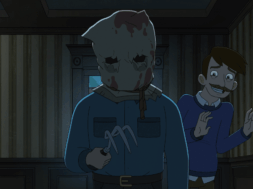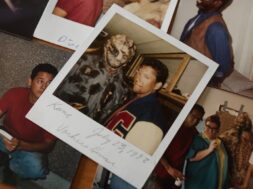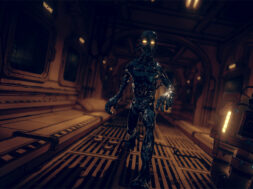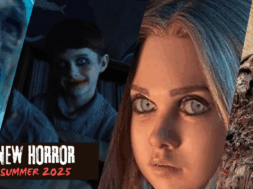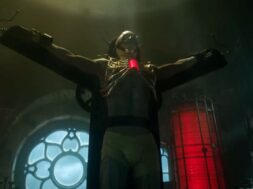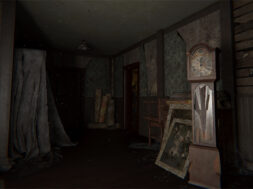What would happen if Aaron Sorkin – he of The West Wing – wrote a period drama/paranoid alien conspiracy thriller? You would have The Vast of Night, a late 50s-set film about a pair of intrepid teen reporters who stumble upon an otherworldly presence in their small town on the night of a big basketball game.
The film hails from a trio of first-timers: screenwriters James Montague and Craig W. Sanger, as well as director Andrew Patterson, which may explain why there has been so much effort made to set the film and its characters up. It’s clear that a great deal of thought went into the premise and the way the film is shot, with perhaps less time spent on the overall arc of the film and how best to pay it off.
The film is staged as an episode of Paradox Theatre, a Twilight Zone-style knock-off – complete with a slow push in on a literal television screen playing the show and even sporadic commercial breaks (disappointingly there are no actual commercials; only fades to black). In the episode, titled – naturally – “The Vast of Night”, Everett (Jake Horowitz) is the teen host of a call-in show in small town Cayuga, New Mexico. The high school senior is smart, savvy and on top of things; he’s introduced in a walk and talk long take helping to troubleshoot the gymnasium set-up before the town’s big basketball game. As he prepares to leave, Everett encounters bespectacled Fay (Sierra McCormick), a shy girl with a brand new portable tape recorder that she needs help to use.
Fay is the switchboard operator for the town’s telephones and as Everett walks her to the station for her shift, they discuss elements both personal (their mutual desire to leave the town behind for bigger opportunities) and cultural (Fay practices her storytelling with three tall tales from a science-fiction magazine about self-driving cars, high speed trains and, most improbable of all, personalized phones that can fit in your hand). By the time Everett drops Fay off, the writers and director have established the backstories of the main duo, laid out a visual schematic of the town and outlined a few key details (lines of dialogue, types of camera shots) that will recur throughout the remainder of the film.
The plot kicks in when Fay notices a strange frequency interfering with Everett’s radio show and they begin to investigate. A recording of the strange rhythmic white noise, once played on the air, instigates a series of events including two mysterious callers, an Army cover-up and (inevitably) lights in the sky above town.

The final element is, unfortunately, The Vast of Night’s biggest weakness. While the characters are unaware of what is taking place and spend the majority of the runtime investigating, any audience who has seen or read a tale featuring little grey men or a flying saucer will know what is happening. As a result, watching Everett and Fay decode the frequency and listen to tales of cover-ups, disappearances and mysterious illnesses is interesting, but hardly revelatory. Even at a scant 89 minutes, the payoff fails to justify the runtime.
Thankfully the performances by both leads are excellent. Horowitz is a fast-talking, know-it-all (in an agreeable way), while McCormick carefully balances the proper amount of “aww shucks” naivety and Lois Lane-in-a-poodle-skirt moxie that nicely counterbalances her co-lead. Fay and Everett are a delightful pair and their yearning for truth and answers works principally because of their youthful earnestness.
The most significant element of note, however, is the way The Vast of Night is shot. There are at least two separate sequences where Patterson trains his lens on his actors and just lets them act for minutes at a time (often when they are simply listening or reacting). The film may be aping the structure of an old TV series, but at its core, The Vast of Night evokes the radio dramas of the past; the kind of fantastic tales that prompted families to gather around their radio and listen late into the night.

This nostalgic reverence, combined with the gorgeous long take tracking shots is so nakedly ambitious and flawlessly executed that it is nearly applause-worthy. In one stand-out sequence, after watching Fay listen to a radio caller for minutes on end, the camera suddenly pulls out of the building and dollys down the street, through back yards, spins through the gym, cranes out of the second story window and across the street to Everett at the radio station. It adds a kind of kinetic energy that livens the film up and aligns with the characters’ heightened excitement as they uncover the mystery.
The Vast of Night may lose some narrative steam as the duo seek out more information around town in the last act, but the confidence and gusto with which Patterson pulls off the visuals is laudable. The film is worth checking out for that reason alone.

